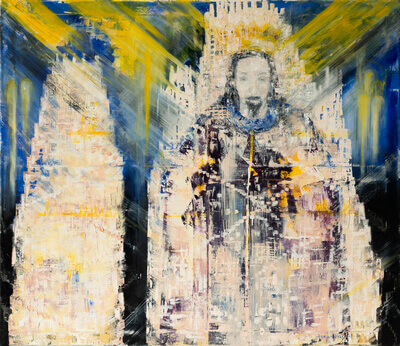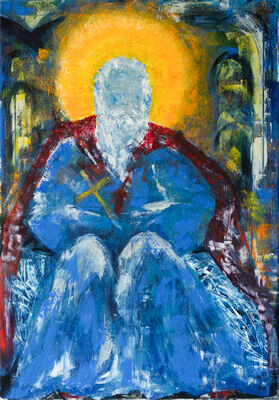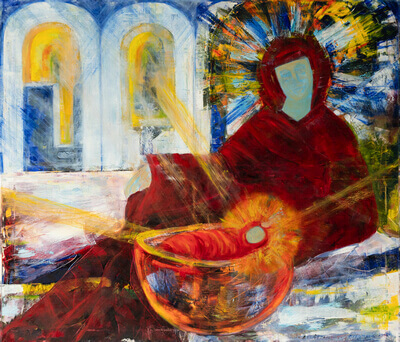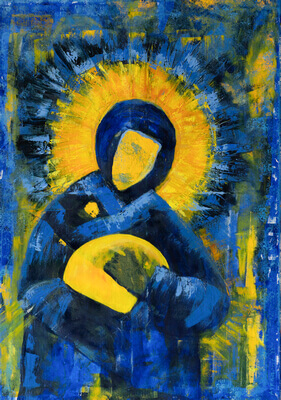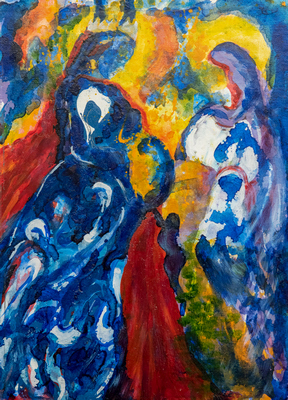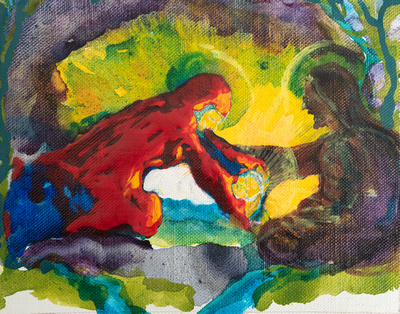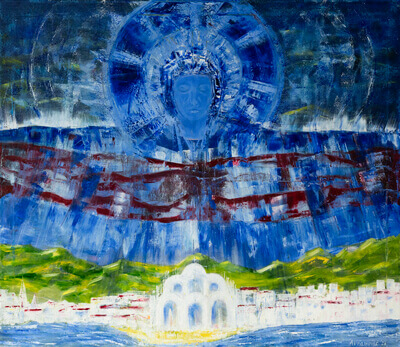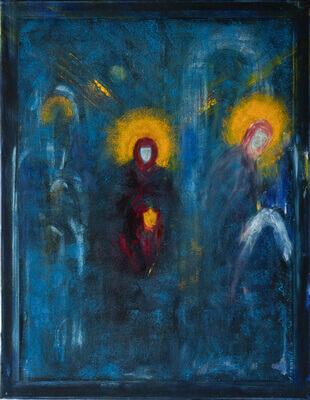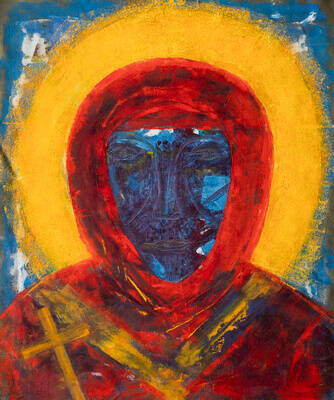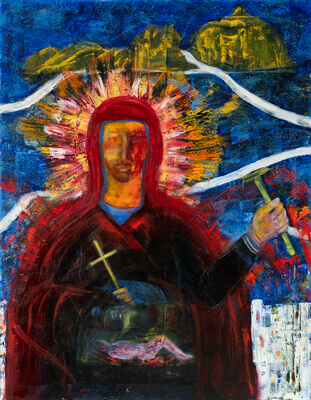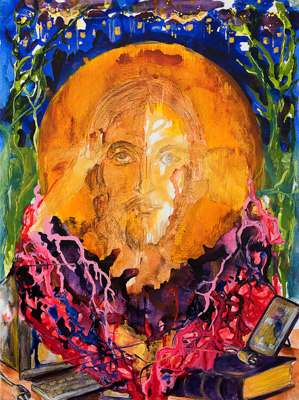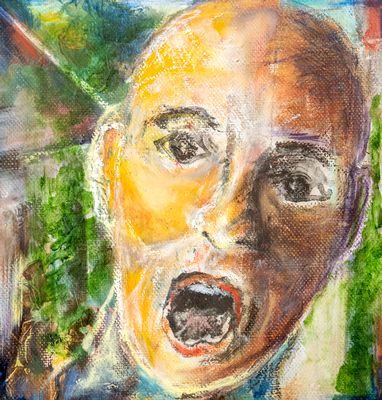Inspired by Bible Stories, Orthodox Icons and Prayers
...from the Annunciation to the questions of our time about Christianity and the internal human struggles...
Bible verses and the contemporary zeitgeist of the Occident served as inspiration for the painting cycle ‘Bible Stories’.
It differs from the artist´s previous work. The solid forms are partially loosened and the flowing and light is united in
a wholeness in contrast to the solid and heavy, representational.
The flowing together of the colours was intended to emphasise a pendulum between the divine and the grounded, human.
As a result many of the paintings in this cycle are spontaneous, immediate, unpredictable, both “saturating” and transparent.
The well-known Bible passages were interpreted in a new way with particular emphasis on the level of the Eastern Christian mysticism
of light, an attribute largely forgotten in the West. The flatness of these images is rooted in the world of Orthodox icons.
For example, in the painting ‘Annunciation’ (Luke 1:28, 20-32, 35), which was among the twelve best works of
the 2018 Herimann Prize competition, one sees lightness, light and gold pouring over the viewer. ‘Moments of light’ appear again
and again in other paintings with biblical themes, but also in ‘questioning paintings’ like ‘Everything is here and now. Is it, is it?’
or in the triptych ‘Anger and Scream: Is it Hell?’.
In the painting ‘Everything is here and now. Is it, is it?’ we come across different symbols: From the face of Christ to the flowing heart;
the city and the green; to the book; the power cord; the computer and the mobile phone.
The painting is simultaneously questioning and searching for the true. It reflects the modern zeitgeist of the West and the zeitgeist
of Christianity and its dilemma.
Blessed by the Gutenbergian and Lutheran ‘revolutions of words’ symbolically represented here by the book that could also be a Bible,
we are now inundated by the words and images of our information age. Television; radio; computer; internet and mobile phone allow us
to participate in all the events of the world almost synchronously. It seems as if everything is available here and now. We can be
everywhere at the same time, but we are often withdrawn from ourselves and fellow human beings.
The image of Christ depicted in the painting ‘Everything is here and now. Is it, is it?’ is taken from the 6th century icon of Christ
Pantocrator (St. Catharine´s Monastery on Mount Sinai in Egypt). Two different facial features of the ancient icon emphasize the dual,
divine and human nature of Christ. The famous quote should be understood as a symbol for our soul and spirit, for the hidden or lost,
separate but God-seeking parts in our humanity that are born in our inner being, in our heart and not in the outer world. In many world
religions one finds the postulates that the mindful life in the here and now represents the real meaning of our existence. The Kingdom
of Heaven is to be in us, figuratively ‘interlinked’ in our hearts.

